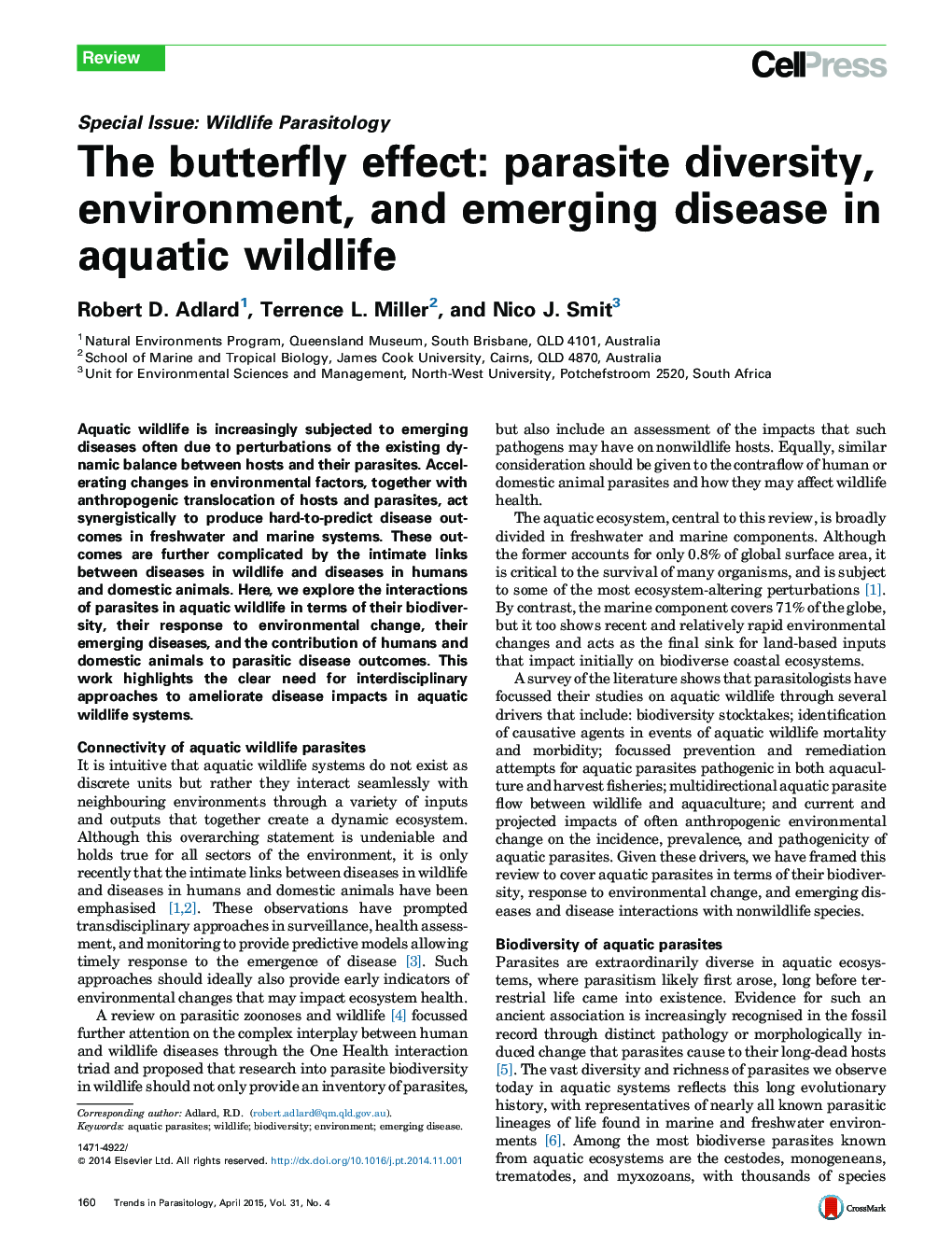| Article ID | Journal | Published Year | Pages | File Type |
|---|---|---|---|---|
| 3422964 | Trends in Parasitology | 2015 | 7 Pages |
•Parasitic disease events in aquatic wildlife are becoming more frequent.•Characterisation of parasite species in wildlife remains in its infancy.•Complexity of anthropogenic and environmental change make wildlife disease difficult to predict.•A truly integrated approach to aquatic wildlife disease will mediate occurrence and severity.
Aquatic wildlife is increasingly subjected to emerging diseases often due to perturbations of the existing dynamic balance between hosts and their parasites. Accelerating changes in environmental factors, together with anthropogenic translocation of hosts and parasites, act synergistically to produce hard-to-predict disease outcomes in freshwater and marine systems. These outcomes are further complicated by the intimate links between diseases in wildlife and diseases in humans and domestic animals. Here, we explore the interactions of parasites in aquatic wildlife in terms of their biodiversity, their response to environmental change, their emerging diseases, and the contribution of humans and domestic animals to parasitic disease outcomes. This work highlights the clear need for interdisciplinary approaches to ameliorate disease impacts in aquatic wildlife systems.
